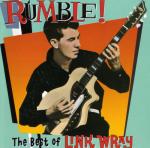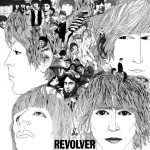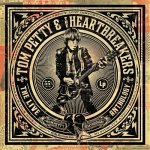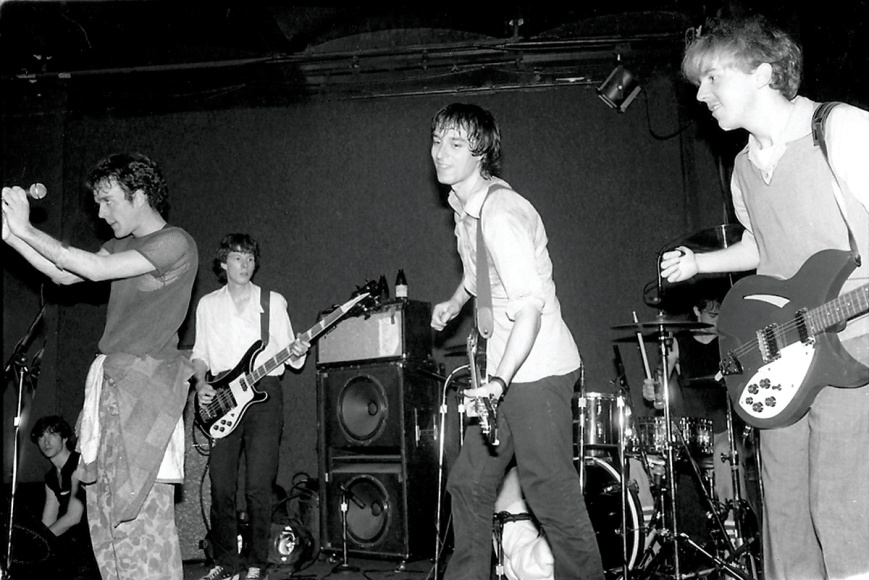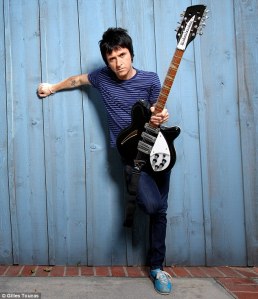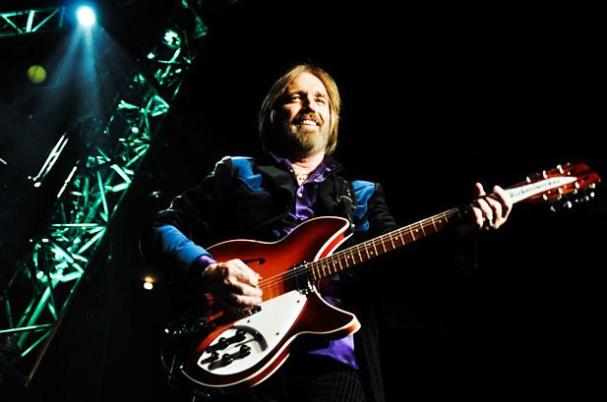Enjoy
My Experience With This Blog… Thus Far…
It’s been a very fun experience with this blog. Honestly, haven’t been able to keep up with it as much as needed and as would like for the summer II session for Digital Online Media just with myself taking a total of 9 hours (which is insane, and am never doing again!) This blog though is something I do plan on keeping up with over time, because I really am in love with guitars, amps and everything in between. It is a fantastic world to be in and to geek out about (especially if, of course, if you’re a musician.) Plus, social media has played a big role with what I do at my radio station KDRP, with interacting with musicians like Ken Stringfellow and Benmont Tench. And it will just keep on getting better!
My Guitar & Pedal Collection
My Picks For Best Guitar-Playing Albums
I grew up listening to older music, older, meaning, as you may think, music that came before my time. Having a dad that was born in the mid-to-late 40’s and a mom born in the mid-to-late 50’s, by default, that set me for a musical education from songs 30+ years old. Like most my age, in any generation, one would avoid, at all costs, to stray away from listening to what one’s parents would listen to because it was “lame.” I never thought the music was lame. I would attempt to listen to more contemporary rock, country, and even pop in the early-2000’s… that didn’t last long. Once I got into high school I came back to ALL the music that I grew up with, little by little, and then began expanding upon that.
SO, there is a purpose to this long intro, and it is: The music I did grow up on from my parent’s was the best. Beatles, Stones, Cash, Waylon, Jerry Lee, and more, it all had unique qualities that made the music of theirs timeless. With that, was fantastic guitar playing. Not only fantastic guitar playing, but fantastic guitar tones.
Hearing George Harrison with his no-frills, minimalistic approach to the guitar for the first time, I felt that that was how guitar playing should be, and what others should build upon. Or hearing Luther Perkins with an even MORE minimalistic approach to guitar, creating the “boom-chicka-boom” sound for Johnny Cash.
So blah, blah, here are some albums I would suggest to anyone who loves great guitar playing:
“Rumble! The Best of Link Wray & The Wraymen” – Link Wray & The Wraymen – 1958-1979
Link Wray. He is the King of the raw guitar tone, and brought the power chord to the masses. He has influenced everyone from Pete Townsend of The Who to Dan Auerbach of The Black Keys. When listening to his nasty-raw guitar tone, it’s hard to believe that most the music that he recorded that people associate most with Wray, such as “Rumble,” comes from the late-50’s into the early-to-mid 60’s. People hold The Rolling Stones “(I Can’t Get No) Satisfaction,” to such high praise, for the riff (predominately) but also tone, but Wray had the grittier tone and his playing was unmatched by anyone.
Key Songs:
- “Rumble”
- “Ace Of Spades”
- “Run Chicken Run”
- “Deuces Wild”
“Revolver” – The Beatles – 1966
First off, I’m a huge George Harrison fan. His guitar playing is just fantastic (listen to the solo material!) So, “Taxman,” is the first song on the album AND it’s NOT George Harrison. What?! Shocked? Maybe, but it’s Beatle Paul McCartney playing that lead part, whaaaaaaat? Yeah, besides George, McCartney and Lennon both were fantastic lead guitar players (it’s Lennon on 1965’s “Day Tripper.”) So yes, 1966’s “Revolver,” is the album the acid got slipped into and what kept the on-going revolutionary and uncharted trajectory of The Beatles (starting really with 1965’s “Rubber Soul“) going. Plus, on a non-guitar related note, it’s the Beatles album that has the best album art, thanks to Klaus Voormann.
Key Songs:
- “Taxman”
- “She Said She Said”
- “And Your Bird Can Sing”
“With His Hot And Blue Guitar” – Johnny Cash & The Tennessee Two – 1957
The first album off of Sun Records for Johnny Cash, this album is “Cash For Dummies” to newcomers who want to hear the early Johnny Cash during his heyday at Sun Studios. Cash had a very unique sound, and a unique voice… but those came unexpectedly. Cash auditioned at Sun wanting to be a gospel singer, Sam Phillips (owner of Sun Studios) told him he couldn’t sell gospel any longer, and told Cash to come back with something different. Cash came back with his band The Tennessee Two. Now, they were suppose to have a steel guitar player show up, but he never did, so it was just Cash & The Tennessee Two. They played Cash’s newly written, “Hey Porter,” and won Phillips over, and the rest they say is history.
Key Songs:
- “Cry, Cry, Cry”
- “Hey Porter”
- “I Walk The Line”
- “So Doggone Lonesome”
- “Folsom Prison Blues
- “Wreck Of The Old 97”
“The Live Anthology” – Tom Petty & The Heartbreakers
Call it cheating, or a very understandable pick. Cheating being it’s a live album, and not a “studio” album… But most who know the Heartbreakers work would find it difficult to narrow it down to one album that fully encapsulates guitarist Mike Campbell’s guitar playing. Perhaps one would say 2010’s, “Mojo,” that had Campbell front-in-center of the songs, with Jimmy Page-style leads like on, “I Should Have Known It,” but then you would be forgetting his melodic 12-string Roger McGuinn-style precision that he demonstrates on many Petty albums, like “Damn The Torpedoes,” “Full Moon Fever,” & “Highway Companion.” So, yeah, “The Live Anthology” is the best “album” I would say that fully displays Campbell’s virtuoso playing + it’s Tom Petty & The Heartbreakers LIVE!
Key Songs:
- “A Thing About You”
- “Here Comes My Girl”
- “A Woman In Love (It’s Not Me)
- “Goldfinger” (1964 James Bond film theme; Instrumental)
- “Oh Well” (Fleetwood Mac cover)
- “It’s Good To Be King”
“Live In Japan ’65” – The Ventures
The Ventures are the greatest rock instrumentalist group, period. Most people know of their hit song, “Walk Don’t Run.” “Live In Japan ’65” has that plus alot of their staples up to that point. Instrumental covers of “House Of The Rising Sun” and The Beatles “I Feel Fine” make it on this album. Their speed and the guitar playing is a whirlwind, and they do it with such ease.
Key Songs:
- Honestly, ALL OF THEM!
RIP! A Remix Manifesto
 Now while I’ll save the “sampling” part for later in this post, “RIP! A Remix Manifesto” is a great film depicting the battle of Copyright vs. Creative Commons; private corporations vs. public domain that is happening now into the 21st century. It’s true that artists have been “copying” songs from others for decades, and building upon those songs with “original” material of theirs.
Now while I’ll save the “sampling” part for later in this post, “RIP! A Remix Manifesto” is a great film depicting the battle of Copyright vs. Creative Commons; private corporations vs. public domain that is happening now into the 21st century. It’s true that artists have been “copying” songs from others for decades, and building upon those songs with “original” material of theirs.
Led Zeppelin stole from ALOT of blues artists, couldn’t believe it the first time I heard this a while back, but it’s true. But oh, Mick & Keith of The Rolling Stones want to sue The Verve for “ripping” the melody of The Stones “The Last Time” for using it for “Bittersweet Symphony?!” Yet, if you REALLY want to get technical, how about you ask Keith about his main guitar influence, Chuck Berry, and where Keith is basically quoted saying (and you hear it in just about ANY Rolling Stones song) that everything that he’s ever done has come from Chuck Berry, that signature piercing staccato riff on the 1st & 2nd strings of the guitar. Shouldn’t Keith get sued by Berry, technically speaking? Oh, and lets go deeper, with Chuck Berry and that signature riff, which was derived from Berry’s blues influences T-Bone Walker and Charlie Christian. It just keeps going back further and further, point is, everybody gets something from someone else, everyone is influenced on the things that come before them and they use the tools & techniques that those before them used to create original material.
I personally am for artists’ getting paid and getting the credit they deserve for their works, BUT I’m definitely on the side of Creative Commons, pioneered by Lawrence Lessig.
Now to my personal feelings of sampling and remixing other peoples art, especially for music is, I really don’t mind. It’s interesting to see what others can do with other peoples art, and transforming it into something new. For music, just for me personally, with sampling, especially in EDM, I’m not really that impressed. Sorry, but I come from the rock ‘n roll world. Not to say I’m down with EDM, but I just kind of shrug my shoulders at it when I hear it.
Those are my feelings about this, have a nice day!
Ben’s Informational Guitar App
Ben’s Informational Guitar App
Ben’s Informational Guitar App would be an instant guitar database for the iPhone, iPad, & Android user. Users could instantly look up a specific kind of guitar, or brand with a few short taps of the screen. 

Users can also use the search tool to find something more specific.
The Electric Sitar
THE JERRY JONES CORAL ELECTRIC SITAR
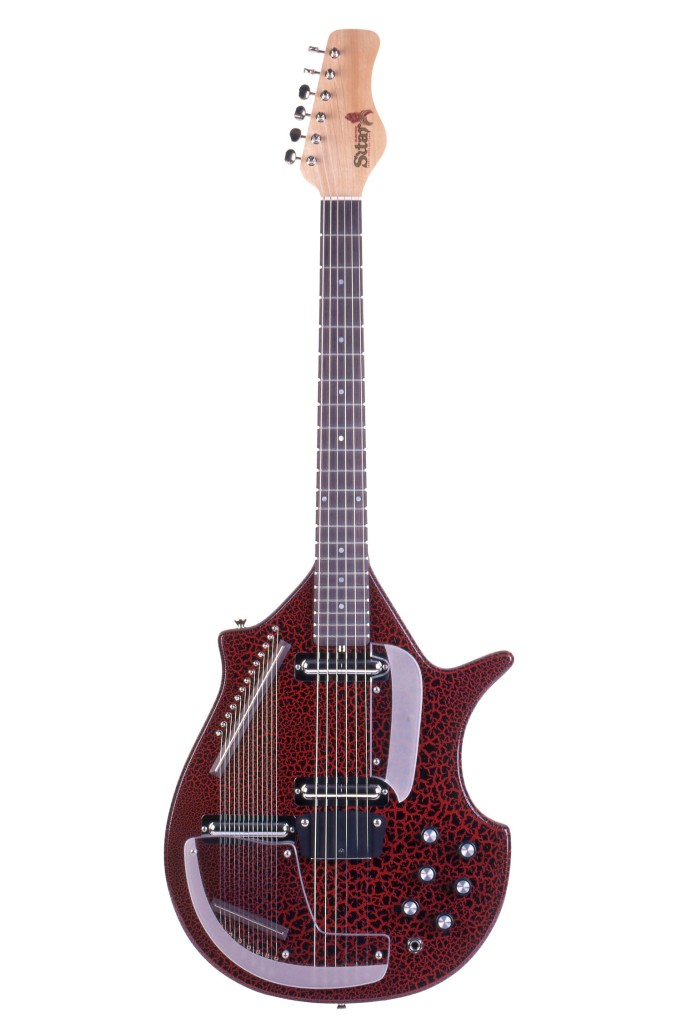
Because of The Beatles, because of George Harrison, in his using of a traditional sitar on the song, “Norwegian Wood,” off of the 1965 album, “Rubber Soul,” they brought the sitar, an Indian instrument, into the popular culture. Thus, EVERYONE after The Beatles began to use the sitar, such as Brian Jones of The Rolling Stones on “Paint It Black,” and various other mid-late 60’s bands. In the 80’s, Dave Stewart of the Eurythmics & Tom Petty wrote the song, “Don’t Come Around Here No More,” once again, bringing the sitar to the front in popular music. 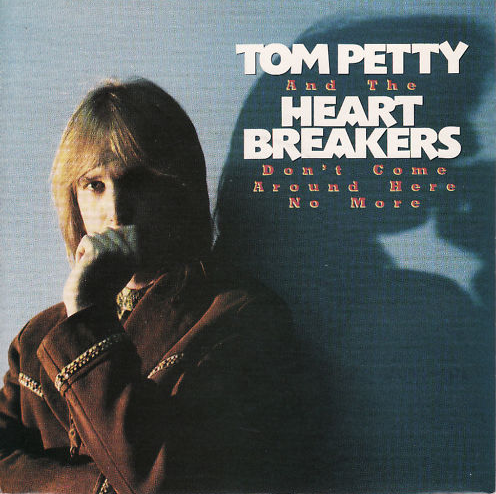 Stewart used an electric sitar, instead of one of the traditionally larger sitars, to record the song… and the song was a big hit for Tom Petty & The Heartbreakers.
Stewart used an electric sitar, instead of one of the traditionally larger sitars, to record the song… and the song was a big hit for Tom Petty & The Heartbreakers.
What is great about the electric sitar is that it is in essence a regular six-string guitar. But what gives it that sitar sound is a thing called a “buzz” bridge, located next to the pickup.
Rickenbacker 360/12-String
 Starting off with one of the very first makers of the electric guitar, is Rickenbacker. Rickenbacker has been making quality instruments for over 70 years, becoming popular in the 1960’s with the rise of The Beatles. Since then, their electric guitars & basses have become unique fixtures in the all sorts of different genres of music, specifically rock ‘n roll.
Starting off with one of the very first makers of the electric guitar, is Rickenbacker. Rickenbacker has been making quality instruments for over 70 years, becoming popular in the 1960’s with the rise of The Beatles. Since then, their electric guitars & basses have become unique fixtures in the all sorts of different genres of music, specifically rock ‘n roll.
One of the most popular guitars in the Rickenbacker family is the electric 12-string, or more specifically, the Rickenbacker 360 12-string.
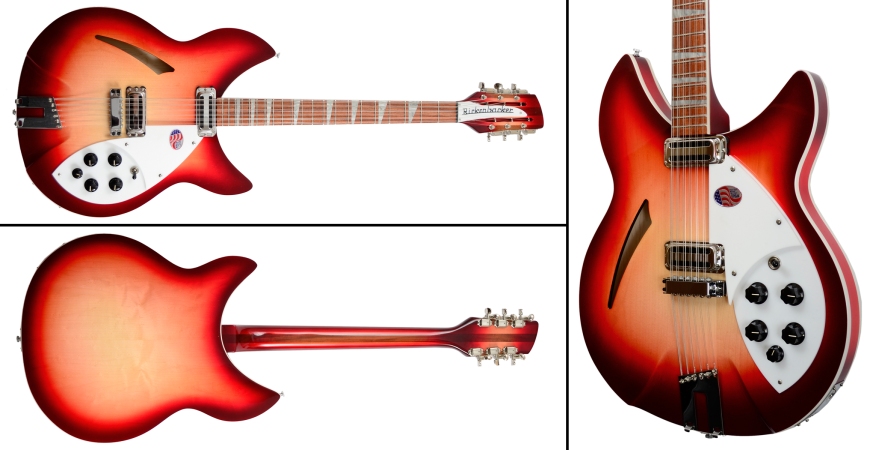
A 12-string, obviously, is double the amount of strings of a regular 6-string guitar. The strings are placed in courses of two strings each that are usually played together. The two strings in each bass course are normally tuned an octave apart, while each pair of strings in the treble courses are tuned in unison. Rickenbacker uses an innovative headstock design that incorporates both a slotted-style peghead and a solid peghead, thereby eliminating the need for the larger headstock normally associated with a twelve-string guitar.
The Rickenbacker 360/12-string was first popularized by Beatles George Harrison in 1964, where the instrument was used heavily on their album, “A Hard Days Night.”
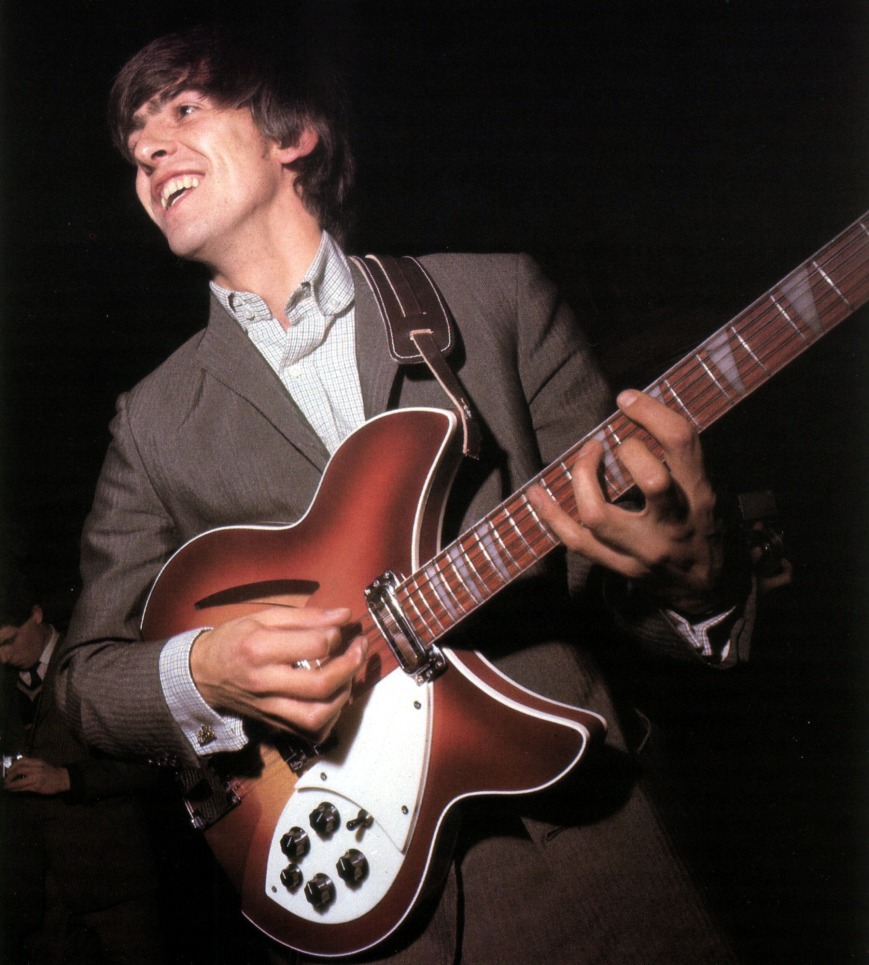
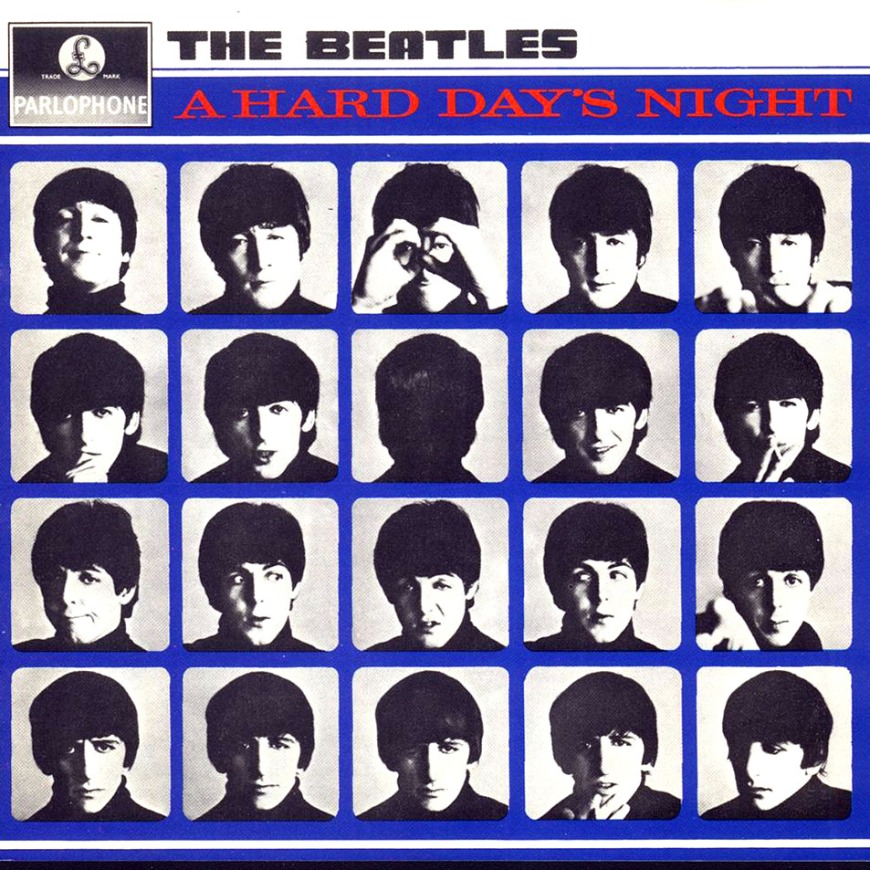
The 360-12 string grew in popularity when Roger McGuinn of the California folk-rock group, The Byrds, began to use the instrument after hearing Harrison used it in The Beatles records. The ringing, chiming, bell-like tone of the 360-12 string, would become the basis for The Byrds sound.

The Byrds were one of the last groups to truly champion the Rickenbacker 12-string throughout the 60’s & early-70’s, until in the late 70’s with the rise of the “new wave” era and formation of more “janglesque” bands, such as Tom Petty & The Heartbreakers.
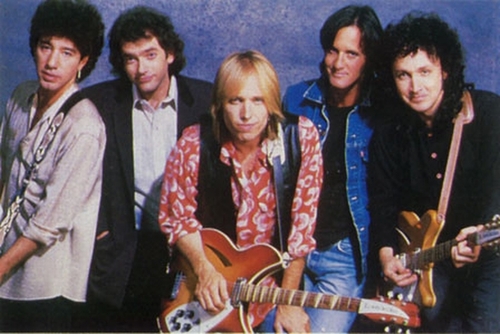
Many bands during this era would bring the instrument back into the spotlight, including upstart bands in the 80’s like R.E.M., The Smiths, The Replacements and The Bangles.
An Introduction
“…And You Only Need One…” is a joke.
It refers to the answer that rock ‘n roll singer/songwriter Tom Petty gave to CBS Sunday Morning’s Anthony Mason in an interview back in 2009 when counting the musician’s large guitar collection at Petty’s “Clubhouse” in Los Angeles, California. 144 guitars there were. Primarily all vintage, coming from the Fender, Gibson, Rickenbacker and Vox guitar companies.
This blog will serve to be an informational tour about the guitar, in general, and exploring lots of different and unique kinds of guitars.
From a standard 6-string, a jangly 12-string, to an electric sitar, and the baritone guitar, I’ll cover and talk about these unique instruments. Along with amps and guitar pedals that help shape a guitarists overall tone.

